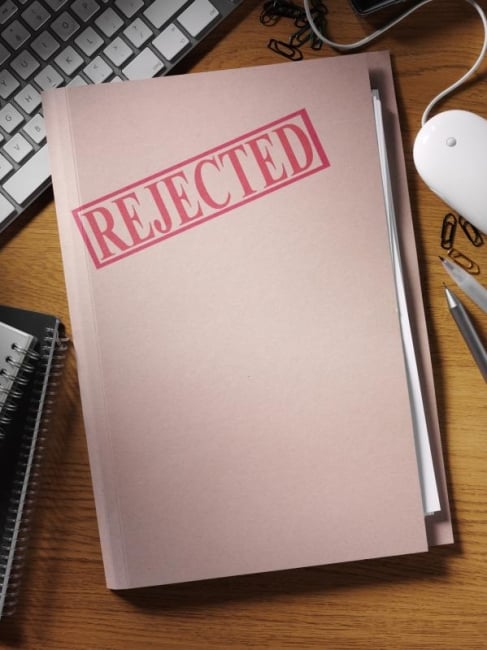You have /5 articles left.
Sign up for a free account or log in.

wragg/istock/getty images plus
I wrote a book! Yes, I was excited about it, and once I had a draft completed, I began searching for a publisher. This is my story about that search, with hopes my experience can be of some use to others interested in publishing their own work.
It was definitely a journey. I submitted a proposal to 21 publishers, received rejections from 16 of them and had one acceptance. I heard nothing from four of them—three of which were university publishers—and have no idea why. How tough is it to send an email?
The median response time was 38 days but varied widely—from nine days to as long as 415. Yes, I had expected nothing from that longest one, but they finally tidied up their outbox and sent me a rejection. It was even polite. Their reason was the most common one given among all the rejections: “It doesn’t fit with our list.” It is a perfectly logical reason—no publisher can print everything—but it shouldn’t take more than a year to figure that out. Still, they were so polite, I almost believed that it took them that long to decide.
In my defense, I was careful to check not only the submission guidelines but also the book lists of all the publishers to whom I sent a proposal. When they said, “It doesn’t fit with our list,” perhaps they were being aspirational (what we want our list to become), being very precise (and therefore unknowable) or just blowing me off. They know you can’t argue with that reason, and since you’re not standing conveniently over a trapdoor, it’s an easy way to end the discussion.
Most of the rejections were polite, often flattering and even encouraging, which was thoughtful of those sending the rejections. Yet only once did a rejection include a suggestion for a specific alternate publisher. The general approach was, “We wish you well in your search for a publisher, but we dare not breathe the name of any of our potential competitors.” Even polite publishers have their limits.
Some of the responses came from underlings whose job was to relay the bad news, tersely. I’m sure that they get a lot of proposals, so I understand completely that they want to process them quickly, focus on the ones they like and dispense with the rest. Why inflate someone’s hopes? Time to move on. So I did.
The least polite response was from a press that had published the books of other faculty members I knew. Those authors were enthusiastic about their experience with this publisher, a university press, and encouraged me to send a proposal. The response was quick—three weeks—but startling. They seemed to be offended that I had bothered them. Didn’t I understand that they could handle only a few titles a year? They were a small press and greatly pressed for time, they told me.
Another editor responded almost immediately with a request for a hard copy of the manuscript. Wow! I printed out a nice copy, went to a shipping store to get a manuscript box and mailed it right from there. Feeling a sense of elation, I drove back to my office. Awaiting me was another message from the editor telling me that, on the recommendation of another editor, I should not send the manuscript. I asked for an explanation, and he told me that I needed to submit a revised proposal that better matched their expectations for books on literature. Then he would let me know whether he would proceed.
A few months later, rejections from other publishers and consultation from some friends had prompted me to make major revisions to my manuscript, putting me in line with his recommendation. So I submitted a new proposal to the same editor, reminding him of our previous communication. After six months, I hadn’t heard anything. I sent a polite inquiry asking whether he had any questions or needed any additional material. His response: “It doesn’t fit with our list.” I was impressed that it had taken him only six months to come up with that.
Two other publishers expressed interest pretty quickly. One of the editors explained that they produce very few books each year but that mine just might make the cut—the editorial board would decide in an upcoming meeting. As that meeting approached, the editor said that I should keep my options open with other publishers. (Uh-oh.) And then, as expected, the board decided against my book. I do give the editor credit for being forthright.
An editor at the other publisher seemed quite excited about my proposal and asked that I not submit it to other publishers. She asked for a few chapters, and I sent those. She sent them out for reviews, one of which was positive and one of which wondered why I hadn’t written a different book. Then it was time to submit the whole manuscript and get full readings. That took months. Just over a year after I had submitted the original proposal, I got the rejection.
I asked the editor for suggestions for other publishers, pointing out that their press had had exclusive consideration of my manuscript for a year. I got two suggestions, one of which was not appropriate for my book (yes, I checked their list), and one to which I submitted a proposal and heard nothing.
In retrospect, I should have tried to work with that editor to turn my book into something acceptable. The reviewers had concluded rightly that I wasn’t adding significantly to the literary interpretation of the poet at the center of my book. But I had made a connection between that poet’s writing and the environmental history of the landscape in which he had lived, worked and written. Wasn’t that worth pursuing further?
The editor never asked that question, but two wonderful colleagues, both professors of literature, did. They pushed me to examine what it was that I was best qualified and prepared to say. They helped me face that tried but true aphorism: write what you know. What I know is ecology, natural history and environmental history. What I had discovered was a narrative of environmental history running through the poetry of Robert Frost. Once I realized all that, my proposal crystallized, and it wasn’t too long before I got a positive response.
Gleaning Insights From No
I now understand why I received so many rejections: the proposal wasn’t as good as it needed to be. I had to figure out how I was best equipped to tackle the project in front of me and then how to convey that to an audience through the publishing process. It is the author’s responsibility to create a gripping proposal—to make it as persuasive, informative, concise and seductive as possible.
Many authors can figure that out on their own, but many others need help, and I was fortunate to have generous colleagues. So if you want to convince a publisher, first ask others to read your proposal before you submit it. If you have a writing group, start there. If not, ask some other thoughtful professional peers. Are they persuaded? Are they convinced that your book is different from all other books? Listen to their suggestions and incorporate those that you find most convincing.
Second, carefully read the instructions for submission from the publisher and review their list of publications. Each publisher is at least a little different from the others. Tailor your proposal to each one. It’s generally permissible to submit to more than one publisher at one time, but if you do, don’t claim that you have not. Editors talk to each other and will find out.
Third, be prepared to wait, often for an unspecified amount of time. If a publisher does specify a time, wait at least that long before contacting them if you haven’t received a response. Otherwise, it is reasonable to contact a publisher after two or three months.
Finally, steel yourself for rejection. It will happen. And if you never hear anything, that’s their way of saying no. Indeed, whatever process you use, rejection is probably inevitable. Even John McPhee had his book The Founding Fish rejected by The New Yorker, where he is a staff writer.
But know there are lots of publishers, and you’ll have many opportunities to convince one that you have something worthwhile to say. So don’t give up. Rejections can be discouraging, infuriating, baffling and insulting, but they can sometimes even be enlightening. Most rejections tell you very little, but glean whatever useful information you can from the responses. Just get whatever you can from them and keep trying.




